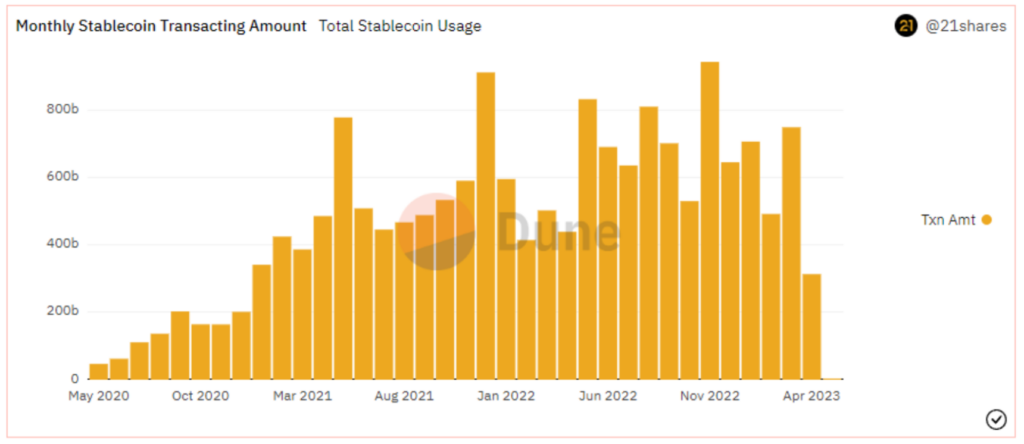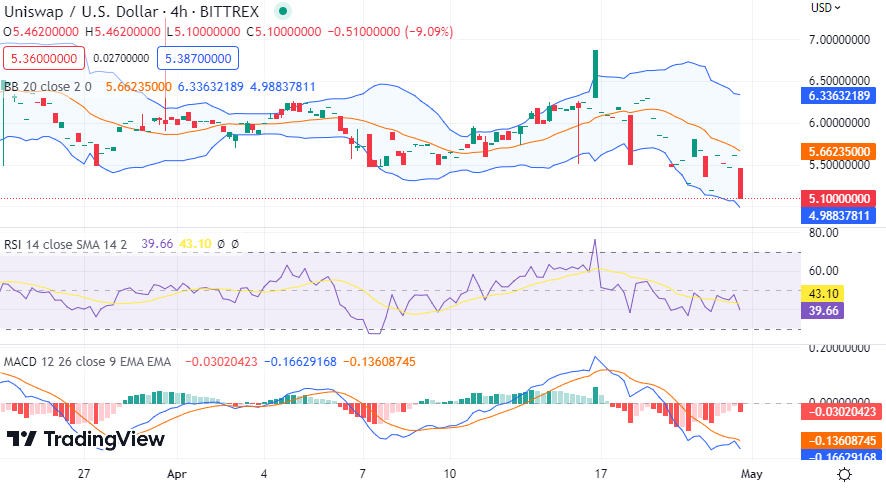- Stablecoin’s market capitalization exceeds $130 billion.
- Stablecoins earn interest by utilizing most of it through yield farming.
Stablecoins have emerged from obscurity to become one of the most important digital asset sectors in the space. The stablecoin market now accounts for over 10% of crypto’s total valuation, with a market cap exceeding $130B.
With over 100 stablecoins listed on Coinmarketcap alone, deciding where to allocate capital is a challenge in itself. In order to make an informed decision, it’s first necessary to understand how the landscape operates.

Why Are Stablecoins So Popular?
Stablecoins denote any digital token pegged to a real-world commodity, such as fiat currency or precious metals. However, dollar-pegged coins dominate the market in an overwhelming way. This is primarily due to the US dollar’s positioning as the global fiat reserve currency.
At their core, stables allow us to transact and utilize traditional fiat capital far more seamlessly than previously possible. Stablecoin holders can send their capital anywhere in the world as quickly as their chosen blockchain allows. This is a major leap from waiting multiple days for a cross-border SWIFT transfer to finalize.
Fully collateralized stablecoins are backed 1:1 by the assets they use to maintain their peg. Bitfinex’s Tether (USDT) and Circle’s USDC are the leading examples of purely collateralized stablecoins, with both occupying positions in crypto’s top 5 tokens. Combined, these two tokens account for >$110B of the stablecoin sector. Under this design, users can redeem their tokens for an equivalent cash payout at any point in time.
MakerDAO’s DAI constitutes the leading decentralized alternative to USDT and USDC.
Rather than being governed by a centralized issuer, decisions surrounding DAI are determined by MakerDAO participants. DAI adopts a slightly different approach to collateralization. The token is fully collateralized by a mix of cash and crypto assets. While large, DAI is significantly smaller than USDT and USDC, commanding a market cap of just under $5B.

Yield Farming: Using Stablecoins To Earn Interest
Stablecoins perform incredibly well as mediums of exchange and stores of value. Many traders use such coins to shield their capital from the directional volatility of the wider crypto market.
However, stablecoins also command vast speculative utility in the realm of DeFi. In many ways, such coins form the lifeblood of DeFi, providing a bridge between the real world and on-chain value. A wealth of opportunities abound to earn interest on stablecoin holdings.
Premier protocols like Curve Finance have risen to multi-billion dollar valuations by providing platforms to generate yield using stables. Origin Protocol’s Origin Dollar (OUSD) uses groundbreaking strategies to deliver the best risk-adjusted stablecoin yields in DeFi.
OUSD harnesses the space’s most popular stablecoins to generate elevated APYs for users. The token is fully collateralized by reserves of USDT, USDC, and DAI. Users can mint or redeem their OUSD at any time in exchange for an equivalent value of any of these reserves. Using these digital currencies as reserves allows holders to earn passive income on their idle stablecoins.
OUSD is able to offer its outsized yield by allocating reserves to blue chip DeFi protocols, including Curve, Convex, Aave, Compound, and more. Aggregating this yield offers far better returns than simply using one of these platforms.
Crucially, OUSD addresses the pain points that characterize traditional staking. When staking, investors generally need to lock up their funds to generate passive income. Additionally, they may need to unstake and re-stake their tokens regularly in order to compound their yield.
With OUSD, however, yield is automatically disbursed to users’ wallets in proportion to their balance – no lockups required. This means that OUSD traders enjoy full capital efficiency and can use their OUSD freely, while not needing to pay gas fees to stake, unstake, or claim rewards.

Understanding Stablecoin Risk
Not all stablecoins are fully collateralized. Algorithmic stablecoins maintain their dollar peg through hard coded smart contract mechanisms affecting supply. However, this design has about to successfully realized. Terra Luna’s $40B implosion in the space of days illustrates the dangers of entering stablecoins without full reserves.
When assessing a stablecoin’s potential, security and transparency should be primary considerations. As a fully on-chain protocol, OUSD’s full metrics can easily monitored via a block explorer or the platform’s analytics page. This transparency combats the opaque walls that define many CeFi protocols.
Further, OUSD has audited by industry-leading firms such as Certora, OpenZeppelin, and Trail of Bits. OUSD is one of only six cryptocurrencies to receive a AAA rating from digital asset insurance firm InsurAce.
Other stablecoins should affirm these principles to maintain user trust. Indeed, there is no good reason for platforms to withhold key data, especially when yield is involved.
Making The Most Of Stablecoins
As a $130B market, stablecoins are a staple of all blockchains. In order to maximize benefits, it’s vital to conduct careful and considered research when choosing a stable.
By gaining an understanding of the sector, users can position themselves at the forefront of a rapidly growing industry and enjoy consistent passive income. With stables, users don’t need to worry about their underlying capital fluctuating with the heightened volatility of broader crypto.
 thenewscrypto.com
thenewscrypto.com